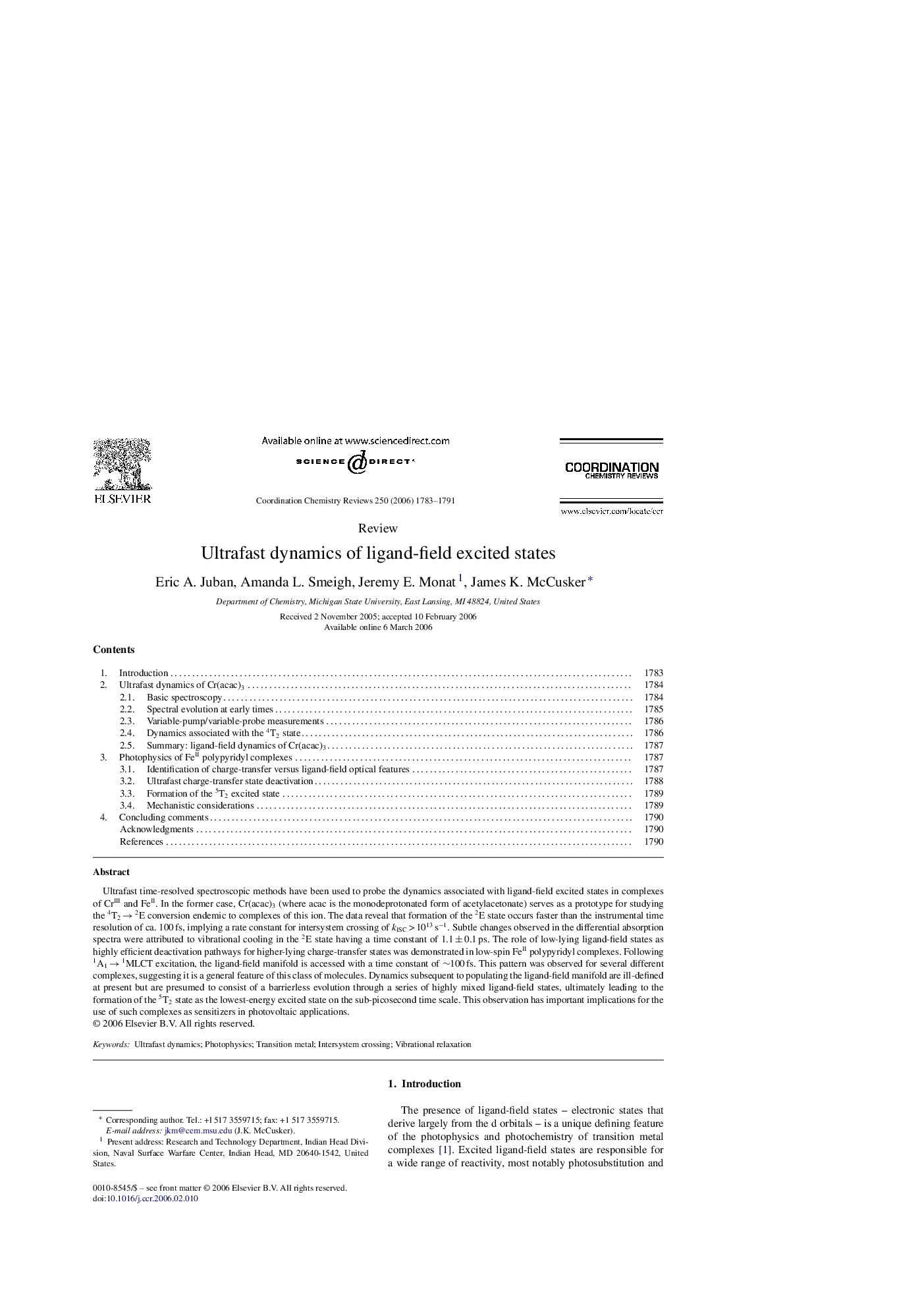| Article ID | Journal | Published Year | Pages | File Type |
|---|---|---|---|---|
| 1300730 | Coordination Chemistry Reviews | 2006 | 9 Pages |
Ultrafast time-resolved spectroscopic methods have been used to probe the dynamics associated with ligand-field excited states in complexes of CrIII and FeII. In the former case, Cr(acac)3 (where acac is the monodeprotonated form of acetylacetonate) serves as a prototype for studying the 4T2 → 2E conversion endemic to complexes of this ion. The data reveal that formation of the 2E state occurs faster than the instrumental time resolution of ca. 100 fs, implying a rate constant for intersystem crossing of kISC > 1013 s−1. Subtle changes observed in the differential absorption spectra were attributed to vibrational cooling in the 2E state having a time constant of 1.1 ± 0.1 ps. The role of low-lying ligand-field states as highly efficient deactivation pathways for higher-lying charge-transfer states was demonstrated in low-spin FeII polypyridyl complexes. Following 1A1 → 1MLCT excitation, the ligand-field manifold is accessed with a time constant of ∼100 fs. This pattern was observed for several different complexes, suggesting it is a general feature of this class of molecules. Dynamics subsequent to populating the ligand-field manifold are ill-defined at present but are presumed to consist of a barrierless evolution through a series of highly mixed ligand-field states, ultimately leading to the formation of the 5T2 state as the lowest-energy excited state on the sub-picosecond time scale. This observation has important implications for the use of such complexes as sensitizers in photovoltaic applications.
